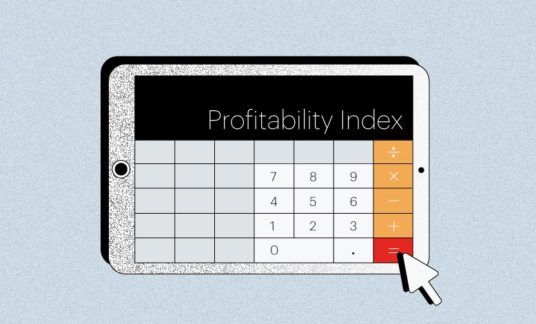Measuring liquidity demonstrates the financial health of your small business. Your liquidity ratio, by definition, shows how capable your business is of taking care of outstanding current liabilities using cash or existing assets.
Let’s go through why liquidity is important, the 3 methods for how to determine liquidity and liquidity ratio examples.
Why Is Liquidity Important?
Liquidity is used in determining creditworthiness. Creditors and lenders want to see high net working capital ratios, or cash ratios, which gives them confidence in a businesses’ ability to pay. If businesses do not have high cash ratios, reasonable values for other liquidity ratio measures might also be acceptable.
It’s also important to keep track of your business liquidity to foresee potential cash problems. Businesses with high liquidity risk may not be able to pay their bills and short-term liabilities. When your ratios dip below acceptable levels, it may be time to make changes or secure loans. When your ratios are high, it may allow you to invest in expansion.
-
DEFINITIONS
- Current Liabilities: Outstanding bills, payables, taxes, loans or other debts your business is responsible for paying back within the next 12 months.
- Current Assets: Cash or other assets that can be quickly converted to cash. This includes inventory that can be sold.
- Accounts Receivable: Money owed to you by customers for purchases and is due within a few months.
How to Measure Liquidity
In figuring out how to calculate liquidity, there are 3 ways to approach it. Each of these ways uses a ratio formula as a measure of liquidity.
- The current ratio (also known as the working capital ratio)
- The acid test (also known as the quick ratio)
- The cash ratio
The Current Ratio / Working Capital Ratio
The current ratio liquidity formula demonstrates how many times you can pay off current liabilities using your assets. If you’re wondering how to measure liquidity, this method is the easiest way and one of the most popular.
Current Ratio = Current Assets / Current Liabilities
-
Current Ratio / Working Capital Ratio Example
A business has current liabilities totaling $100,000. They have cash and assets (including inventory) of $150,000. Their current ratio would be 1.5 ($150,000 / $100,000).
As a quick measure of liquidity, a ratio of 2 is typically taken as indicative of a financially sound business.
When looking at the liquidity ratio formula, businesses prefer to have a current ratio of at least a 1. Anything less than 1 could signify problems paying bills. There are exceptions, however. In some industries, such as restaurants and some retail businesses, using this liquidity ratio formula might be less than 1. That’s because these types of businesses collect payments from customers immediately, but they can have an extended time to pay suppliers.
The Acid Test / Quick Ratio
Another liquidity formula is the acid test (also known as the quick ratio). This is a more conservative way of measuring liquidity.
The acid test doesn’t include current inventory as part of its measure of liquidity. It uses only other types of current assets, such as cash equivalents, accounts receivable and marketable securities.
-
DEFINITIONS
- Cash Equivalents: Short-term securities that can quickly be turned into cash, such as money market accounts, short-term bonds and other liquid investments.
- Marketable Securities: Securities that are bought and sold on a public exchange, and can typically be sold within 3 months. These include items such as stock and treasury bills.
The acid test ratio tells business owners how well they can meet short-term debts without having to sell any of its existing inventory. This can be important because stock can’t always be sold quickly.
Acid Test Ratio = Current Assets (Excluding Inventory) / Current Liabilities
-
Acid Test / Quick Ratio Example
A business has current liabilities totaling $100,000. They have cash and assets (including inventory) of $150,000. However, $75,000 of that total is tied up in inventory. While their current ratio would be 1.5 ($150,000 / $100,000), their acid test ratio would be 0.75 ($75,000 / $100,000).
In this case, the business can’t meet its obligations without selling its inventory.
The Cash Ratio / Net Working Capital
The third way to measure liquidity is the cash ratio or net working capital. If you are using this method of how to determine liquidity, you will see that it is the most conservative of the 3 liquidity ratio formulas.
In addition to excluding inventory from the equation, you also exclude accounts receivable.
Cash Ratio = Current Assets (Excluding Inventory and Accounts Receivable) / Current Liabilities
This places an emphasis on cash resources and discounts your inventory and future payments for goods and services.
-
Cash Ratio / Net Working Capital Example
A business has current liabilities totaling $100,000. They have cash and assets (including inventory) of $150,000. However, $75,000 of that total is tied up in inventory. Another $50,000 of that total is accounts receivable.
Their current ratio would be 1.5 ($150,000 / $100,000). Their acid test would be 0.75 ($75,000 / $100,000). Their cash ratio, however, would be 0.25 ($25,000 / $100,000).
Obviously, the higher the ratio, the more cash you have on hand. That’s why it’s sometimes called net working capital because the amount over a ratio of 1 is money you can put to work without risking insolvency.
Different industries have significantly different cash ratios. Merchandisers that constantly use cash to buy inventory might have an extremely low cash ratio. Construction companies might need a higher cash ratio to pay for raw materials and wages.
A cash ratio that is too high can also signal an inefficient use of capital. The cash may be better off in higher-yielding investments or repaying debt.
How Can I Limit My Liquidity Risk?
Anything you can do to increase your cash position and decrease your outstanding liabilities will have a positive impact on your liquidity risk. However, you want to make sure anything you do short-term does not harm your long-term growth of your liquidity ratio.
Increase Sales
The more cash you have on hand, the more liquid you will be. It takes unsold inventory, which promises future liquidity, and turns it into cash, which is liquid.
Pay Down Debt
On the flip side, the more outstanding debt you have, the more liability your business faces. Paying down debt reduces your liability and, in turn, your liquidity risk.
Sell Unused Assets
If there are assets your small business has that you won’t be using in the future, consider turning these assets into cash.
Increase Efficiencies
If you can save money through more efficient operations, reduce payroll or cut down on unnecessary spending, it will also decrease your potential liabilities.
Reduce Spending
Pulling back on non-essential spending can help with short-term liquidity, but you will want to balance that against the long-term investments you need to make in your business. There are times to be conservative and times to invest.
Negotiate Better Deals, Renegotiate or Refinance
If you can negotiate better terms with your creditors, lenders or suppliers, you can also reduce your liquidity risk. In the case of current commitments, you may be able to refinance or renegotiate better terms.
Liquidity ratios tend to focus on short-term liquidity. Refinancing your short-term loans over extended periods of time can also impact your liquidity tests. While this won’t solve your concerns long-term, it can shore up your short-term shortfalls.
Increase Collection Efforts
Anything you can do to reduce the time it takes to receive payment from your customers will help with cash flow. More aggressive collection policies, including shorter payment windows, late payment penalties and more explicit terms can help keep cash flowing.












